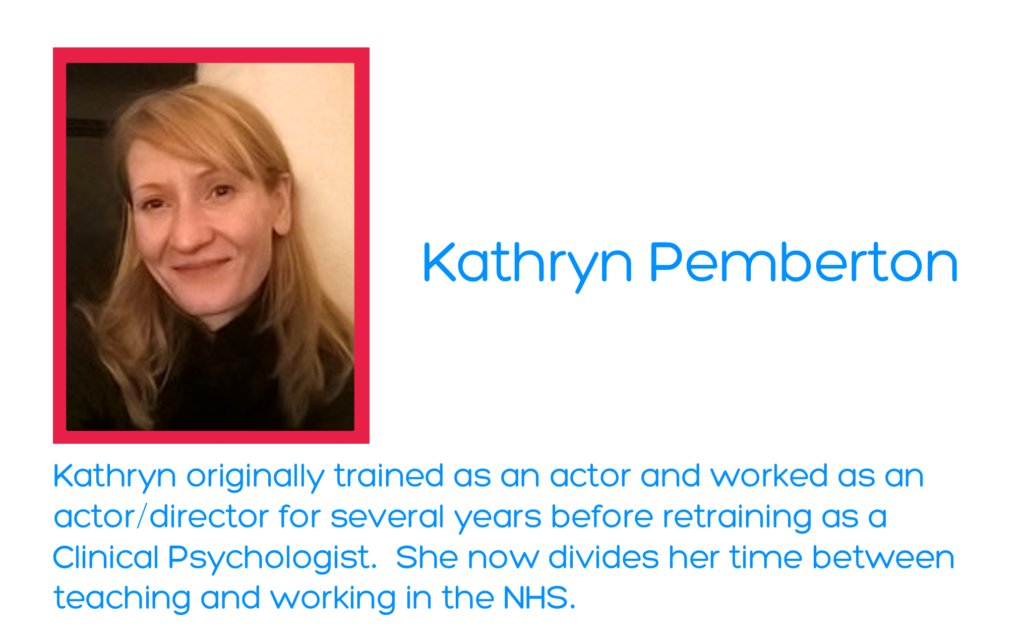
It’s a tough life being an actor. I know. Fifteen years ago I gave up acting and directing and re-trained as a clinical psychologist. Post-qualification I became increasingly interested in an approach called Cognitive Analytic Therapy (CAT for short). CAT basically looks at how and why we behave the way we do – how the lens through which we come to understand the world is developed. This process is seen as being fundamentally relational. Basically, who we are and how we understand the world is created or constructed through our social relationships. What really excites me about this approach is this idea of construction suggests the possibility of change.
Looking back, I think one of the reasons I became drawn to CAT is because it is very similar to exploring a character in terms of motivations, beliefs and sense of identity in relation to other characters. Who we are, what we do, and how we became to be as we are at this moment is grounded in relationships, and how, as children we came to understand our world. Part of the approach is based on the works of the Russian psychologist, Lev Vygotsky, who summed this up inthe now famous quote: “Through others we become ourselves.”
One of the key ideas in CAT is that of ‘reciprocal roles’ – which are like imprints of relationships we have experienced in the past which we take on inside ourselves and become part of our ‘lens’. I’ll say more about this another time, but in essence this idea helps explain how we can end up relating to ourselves (and sometimes people around us) in ways that others have related to us in the past.
The CAT approach encourages people, with support, to step back from the patterns of behaviour which may have been useful in the past to help them feel safe but now as adults have become more problematic. The idea is, through reflection and collaborative working with the therapist, you canfind ‘exits’ from these patterns of behaviour and perhaps develop some new ways of relating to yourself and the world.
When I think about acting, I have great respect for anyone who steps on a stage, in front of a camera, in front of a microphone. Whether the actor is considered good or bad, I know it takes guts and courage to put yourself out there and invite judgement. Because essentially, although there are manyaspects to an actor’s relationship with their audience, judgement is a dominant theme. What is beingjudged here? The performance certainly, along with the production as a whole, but how easy is it to separate that judgement from the individual? Impossible I would say. I always enjoyed doing comedy when I was an actor. Why? Because you could hear whether the audience were with you, supporting you (or not). You could get an instant reaction and your performance would change, possibly imperceptibly, as a result.
This probably says something about me as a person as well as an actor, but it also demonstrates the point. Acting involves external judgement, from the gruelling audition processes and the performance itself, to the reviews after the event. Actors are human beings, and it’s understandablethat this process of scrutiny, criticism and appraisal is a difficult one.
Perhaps step back and reflect on this. Rather than relying on external judgement for your wellbeing and sense of self-worth, (whilst not always the case, it certainly is a common hazard of being an actor) take a moment to think about what you feel, how you judge yourself, and how accurate this is. Perhaps keep a journal to aid you in your reflections.
I’ll be writing more about CAT in another piece, where I’ll use the character of Hamlet as a way of illustrating the CAT process more clearly, which I hope you’ll be interested in reading. Until then, look after yourselves, and I encourage you to strive to be compassionate and understanding towards yourself. Get the basics right – eat well, get enough sleep and go easy on yourself.
If you would like to learn more about CAT please visit the ACAT website HERE

Really helpful take on the overlapping disciplines of theatre and therapy.
I agree CAT is an especially helpful therapy framework to look at these ideas- a rich source of ideas such as the RR of exposed to exposing- particularly in auditions!
Look forward to the next piece.